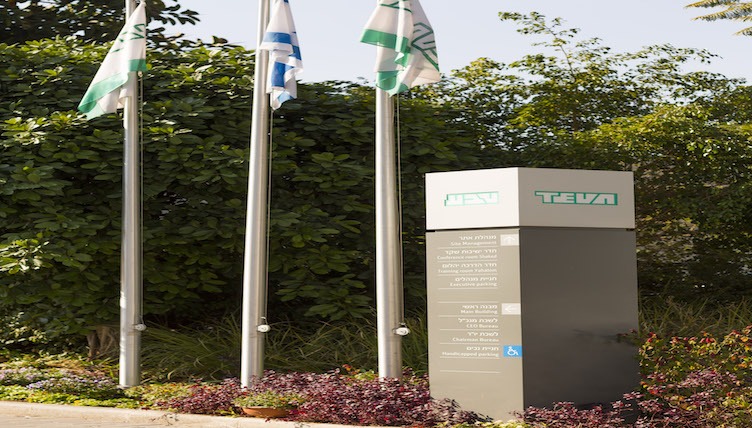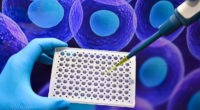What Does Teva’s New CEO Face?
Kåre Schultz, now president and CEO of H. Lundbeck A/S, has been appointed president and CEO of Teva Pharmaceutical Industries. In taking the helm at Teva, Schultz is taking on the task of increasing sales and further paying down debt at the company.
Schultz has more than 30 years of experience, which includes senior positions at Novo Nordisk prior to taking the top job at Lundbeck in 2015. He takes charge amidst a major restructuring at Teva involving staff reductions of 7,000 employees and the closing or divesting of 15 manufacturing plants following disappointing second-quarter results in which the company took a goodwill impairment charge of $6.1 billion related to the performance of its US generics business.
Teva’s new CEO
In taking the top job at Teva, Schultz will replace Dr. Yitzhak Peterburg, who will continue to serve as interim CEO until Schultz relocates to Israel, where he will be based out of the company’s Petah Tikva headquarters. Peterburg took the helm at Teva following the departure of Erez Vigodman, who stepped down as president and CEO in February 2017.
In his role as president and CEO of H. Lundbeck, Schultz is credited with leading significant restructuring initiatives and launching a turnaround strategy focused on driving a sustainable global cost structure and operational model. Prior to his role as president and CEO of H. Lundbeck, he most recently served as chief operating officer of Novo Nordisk and worked for nearly three decades at Novo Nordisk, where he served in a number of other leadership roles, including vice president in product supply and director of product planning and customer services in the Diabetes Care Division. At Novo Nordisk, Schultz played a major role in modernizing the company’s large-scale biologic production and in leading the company’s expansion into the US and Chinese markets
Those skill sets will be vital as Teva looks to increase sales, pay down debt, and refocus its product portfolios in its generics and specialty medicines business. In August 2017, Teva announced plans for a major restructuring involving staff reductions of 7,000 employees and the closing or divesting of 15 manufacturing plants following disappointing second-quarter 2017 results in which the company took a goodwill impairment charge of $6.1 billion related to the performance of its US generics business. Teva reported second-quarter 2017 revenues of $5.7 billion, up 13% compared to the second quarter of 2016, primarily due to the inclusion of the company’s $40.5-billion acquisition of Actavis Generics (i.e., the generics business of Allergan), a deal that closed in August 2016. Teva, however, said it identified certain developments in the US market that caused it to revisit management’s assumptions regarding the market dynamics of its US generics unit, and therefore recorded a goodwill impairment charge of $6.1 billion in the second quarter. As a result, the company recorded a second-quarter GAAP (generally acceptable accounting principles) operating loss of $5.7 billion, compared to operating income of $400 million in the second quarter of 2016.
The company said it plans to reach by the end of 2017, a headcount reduction of 7,000 made since the closing of the Actavis generics deal, which is 2,000 above its initial target. The company also said it plans to optimize its operational network and plans to close or divest six manufacturing plants in 2017 and nine manufacturing plants in 2018. It also plans to reduce or optimize its geographical footprint in markets where it thinks it is “significantly subscale.” By the end of 2017, the company expects to exit 45 markets globally. Since the closing of the Actavis Generics acquisition, the company said it has delivered on a pro forma basis over $800 million in cost savings, which is ahead of what it originally planned. By the end of 2017, it expects to realize cumulative net synergies and cost reduction of approximately $1.6 billion which is a further reduction of $100 million compared to what the company communicated previously.
Inside Teva: the challenges
Analysts point to Teva’s $40.5-billion acquisition of the generics business of Allergan (i.e., Actavis Generics) in 2016 as a contributor to the company’s current financial issues in increasing the company’s debt while facing underperformance in its generics business, particularly its US generics business. Key for Teva going forward is its performance in the generic-drug market, particularly in the US generics market, as well as navigating generic-drug incursion for its top-selling product, Copaxone (glatiramer acetate injection), a multiple sclerosis (MS) medicine, which had 2016 sales of $4.2 billion.
Teva has two main product segments: generics, which had 2016 sales of approximately $11.99 billion, and its specialty medicines segment, which includes Copaxone, and which had overall segment 2016 sales of $8.67 billion. The company’s global women’s health business and its oncology and pain business are part of Teva’s specialty medicines segment. Its global women’s health business had 2016 sales of $458 million, and its global oncology business had sales of $1.14 billion. Its pain-care drugs are part of the company’s central nervous system drug franchise, which includes MS, its leading product area that includes Copaxone as well as drugs to treat neurodegenerative diseases, movement disorders, pain care, and migraines.
With respect to Copaxone, Teva successfully applied a defense strategy for generic versions of Copaxone when it launched a 40-mg/mL formulation of the product with a three-times a week dosing regimen following the patent expiration of a first-generation 20-mg/mL formulation with more frequent dosing. Patents covering Copaxone 20 mg/mL expired in May 2014, and in most of the rest of the world in May 2015. The 40-mg/mL Copaxone was launched in the US in January 2014 and was approved in Europe in December 2015. Teva’s business strategy for Copaxone relies heavily on the continued migration of a substantial percentage of Copaxone patients using daily doses (the 20-mg/mL formulation) to the 40- mg/mL, three-times-a-week version. The issue for Teva going forward is potential generic competition for the 40-mg/mL formulation. In February 2017, Teva suffered a setback when a federal district court ruling invalidated four of its patents relating to the 40-mg/mL formulation, and how patent litigation for the 40-mg/mL formulation plays out is an important revenue consideration for the company.
Teva’s Copaxone 40 mg/mL version accounted for more than 85% of total Copaxone prescriptions filled in the US and more than 75% of its prescriptions filled in Europe based on QuintilesIMS data as of June 2017 and as reported by Teva. In the second-quarter 2017, Copaxone posted sales of $1.02 billion, a 10% decline year over year. Copaxone revenues in the US were $843 million, a decrease of 12% compared to the second quarter of 2016, mainly due to lower volumes of Copaxone 20 mg/mL as well as negative net pricing effects despite a price increase of 7.9% for both Copaxone products in January 2017. Copaxone revenues outside the US were $180 million, down 3%, compared to the second quarter of 2016.
Generic medicines revenues in the second quarter of 2017 were $3.1 billion, an increase of 20% compared to the second quarter of 2016, reflecting the inclusion of the Actavis Generics business. The generic medicines segment generated profits of $691 million in the second quarter of 2017, an increase of 14% compared to the second quarter of 2016. Generic medicines profitability as a percentage of generic medicines revenues was 22.4% in the second quarter of 2017, down from 23.6% in the second quarter of 2016.
In an effort to pay down debt, Teva is moving forward with a plan to divest select businesses, including the sale of the assets of its global Women’s Health business as well as its Oncology and Pain businesses in Europe, in its specialty medicines segment as means to generate at least $2 billion in total proceeds from the sale of these businesses as well as additional asset sales to be executed by the end of 2017. To that end, Teva agreed to sell its intrauterine copper contraceptive Paragard for $1.1 billion to CooperSurgical, a Trumbull, Connecticut-headquartered medical equipment manufacturer focused on women’s health. The deal is expected to close by the end of 2017.
In August 2017, Teva lowered its revenue and profit expectations for 2017. It now expects revenues of $22.8 billion to $23.2 billion, down from a January 2017 estimate of $23.8 billion to $24.5 billion. The company expects operating income in 2017 of $6.6 billion to $6.8 billion, down from its January 2017 estimate of $7.4 billion to $7.8 billion. The revised guidance ranges assume no generic competition to Copaxone 40 mg in the US in 2017. The adjusted outlook takes into consideration the impact of increased price erosion in the company’s US Generics business, which is expected to be in a high single-digits rate through the remainder of the year, and delays in generic launches in the US.







